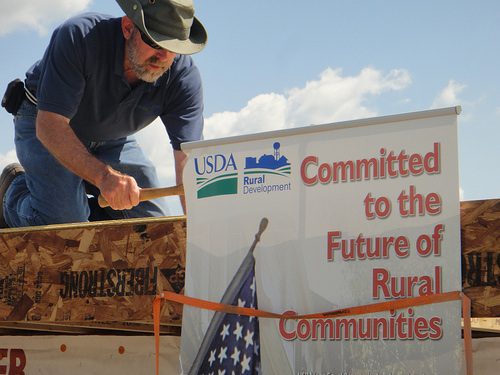Affordable housing advocates were happy recently to see the Senate Appropriations Committee tell the U.S. Department of Agriculture to get its act together on rental housing. USDA’s FY12 budget proposed to eliminate funding for the department’s flagship Section 515 rental housing loan program and focus its efforts on the Multi-Family Housing Revitalization Program known as MPR. Then the FY13 budget took the opposite approach, proposing to focus on Section 515 and eliminate funding for MPR. In S.Rpt. 112-163 the frustrated Senate committee “directs the Secretary, conclusively, to determine and articulate an effective long-term strategy to address rural rental housing needs.”
USDA has been financing development of rental housing for low- and very low-income rural Americans since 1963. In 2004 USDA released a Comprehensive Property Assessment of its Section 515 loan portfolio. The consultants who conducted the research found the properties in the Section 515 portfolio were, on average, 23 years old. Owners of more than half the properties had the right to prepay their mortgages, potentially removing these units from the affordable housing stock.
The physical conditions of the properties did not pose any serious immediate health and safety problems, they reported, but they warned that many properties would face significant physical needs in the immediate future. Not a single one of these properties had enough money in reserve to address its physical needs over time.
In response, the George W. Bush USDA focused attention and resources on physical preservation of the Section 515 stock. Congress helped these efforts by creating two new rental preservation programs in 2006—MPR and a Preservation Revolving Loan Fund—and adapting the previously unused Section 542 voucher program for tenants in properties where mortgages were prepaid. Section 515 funding continued to be used for both new construction and preservation of existing properties.
The Obama Administration’s approach, on the other hand, has been inconsistent. Congress has maintained funding for both Section 515 and MPR, as well as Section 542 vouchers (although the Preservation Revolving Loan Fund was not funded for FY12 and seems unlikely to continue in FY13). The Administration—not only USDA, but also the Office of Management and Budget, which has a mostly silent but powerful role in developing the annual budget request and legislative proposals—would be well advised to follow the Senate Appropriations Committee’s suggestion.
If USDA takes the Senate Appropriations Committee’s advice to develop a long-term strategy for affordable rural rental housing, what should that strategy include? First, it should recognize:
-
Low‐ and moderate‐income people must be protected in budget and deficit reduction proposals by opposing cuts in or the elimination of effective services, while supporting expansions necessary to respond to growing need; -
Not only must existing affordable rental housing be preserved, but new units must be developed; -
A full range of options is needed for effective preservation, and Section 515 and MPR provide different tools; and -
The Section 538 loan guarantee program, with higher interest rates than the Section 515 direct loan program, and the Low Income Housing Tax Credit Program, cannot produce units affordable for tenants with the very lowest incomes, while the Section 515 program can.
The details of the strategy should:
-
Preserve existing properties and development of new ones; -
Propose legislation authorizing MPR, and advocate for that legislation; -
Support authorization and funding of the Preservation Revolving Loan Fund; -
Request and advocate for full funding for Section 515 direct rental housing loans, Section 521 Rental Assistance, MPR, PRLF, and vouchers, as well as for Section 514/516 farmworker housing, Section 538 loan guarantees, the Low Income Housing Tax Credit, HUD Section 8 vouchers, the authorized but unfunded Housing Trust Fund, and other HUD programs; -
Implement Section 2833 of the Housing and Economic Recovery Act of 2008 to expedite sales of Section 515 properties to new owners who would keep them affordable for low-income tenants; -
Set aside $6 million in Section 521 Rental Assistance (RA) each year for debt forgiveness or new RA contracts in preserved properties; -
Protect tenants of Section 515 and 514 properties by:
—providing portable vouchers without time limits for tenants of properties whose mortgages are prepaid or foreclosed, and require owners to allow the tenants to remain in their homes;
—under USDA’s voucher program, recertify tenants annually or when households experience hardship such as death or loss of a job;
—adjust USDA’s voucher amounts annually to reflect inflation; and
—make immigration restrictions consistent with those used by HUD, pursuant to the statutory provision that applies to both agencies.
A majority of Section 515 tenants are elderly or disabled. In 2011, Section 515 tenant households’ incomes averaged just over $11,000 per year. Deficit reduction, however important, should not make these tenants’ lives harder.
Photo by USDAgov CC BY-ND





Comments